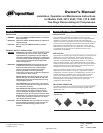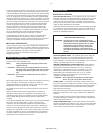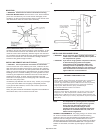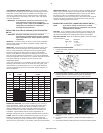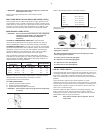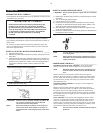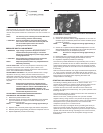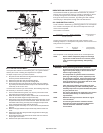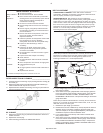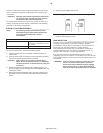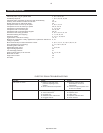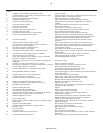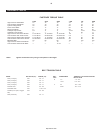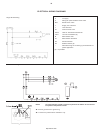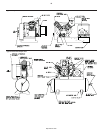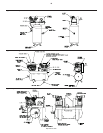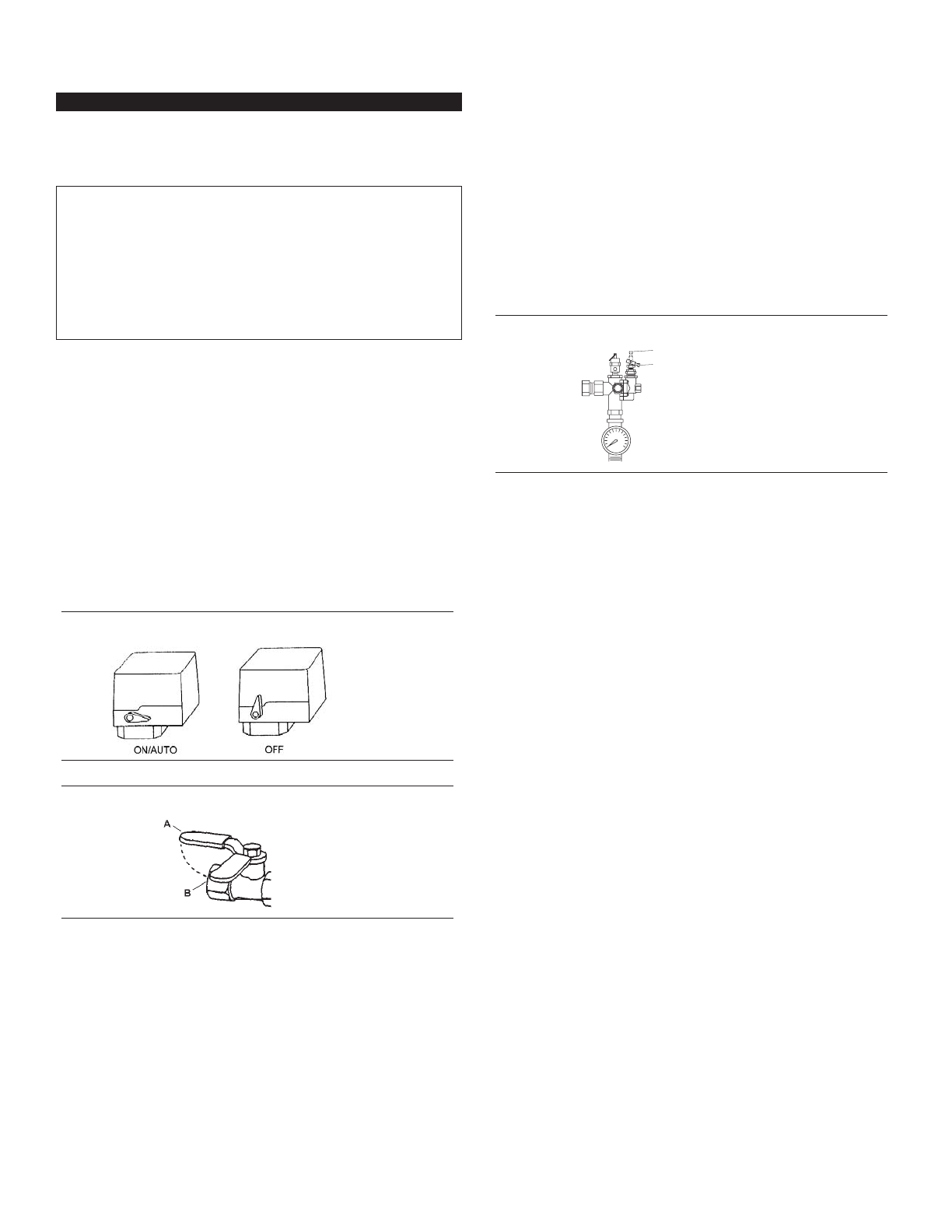
OPERATION
INTERMITTENT DUTY FORMULA ______________________
Units operating above 200 PSIG are to be operated according to the
"Intermittent Duty Formula."
INTERMITTENT DUTY FORMULA
Pump-up time should not ordinarily exceed thirty (30)
minutes or be less than ten (10) minutes. Shutdown
periods between cycles of operation should be at least
equal to the pump-up time. Note: When the compressor
is regulated by constant speed control, the shutdown
period is the time the compressor is operating
unloaded.
A pump-up time limit with the following cool-down period is
recommended to protect the valves and heads against stabilized
high operating temperatures, which could rapidly build up carbon in
these areas.
All inquiries for high-pressure compressor application where the
"use" cycle differs from the "Intermittent Duty Formula" should be
referred to Ingersoll-Rand.
START-UP (ELECTRIC MOTOR DRIVEN MODELS) _______
1. Close the service valve.
2. Release any remaining tank pressure by slowly opening the manual
drain valve.
3. Close the manual drain valve and apply power to the compressor. If
the pressure switch is equipped with an “ON/AUTO-OFF” lever, flip
the switch to the “ON/AUTO” position. If the unit is equipped with a
control panel “ON/OFF” switch, move the switch to the “ON”
position.
4. Slowly open the service valve.
•
CAUTION Unusual noise or vibration indicates a problem. Do
not continue to operate until you identify and
correct the source of the problem.
NOTE Ensure the direction of rotation is correct per the
arrow on the motor. If the rotation is incorrect on
three-phase units, interchange any two of the three
leads.
START-UP (GASOLINE ENGINE UNITS)_________________
•
WARNING Do not operate gasoline engine units in an enclosed
area.
1. Release any remaining tank pressure by slowly opening the manual
drain valve.
2. Turn on the engine gasoline supply.
3. Put the choke in the “on” position.
4. Close the service valve and put the unloader lever in the “unload”
(A) position for Kawasaki and Honda engine driven models, or the
“load” (B) position for Kohler engine driven models.
5. Start the engine, release the choke, and allow the engine to warm
up for two to three minutes.
6. Return the unloader lever to the “load” (B) position on Kawasaki and
Honda engine driven models.
NOTE Turn the gasoline supply off when the compressor
is not being used.
NOTE Some gasoline engine driven compressors require
5-8 break-in hours of operation before reaching full
capacity and speed.
COMPRESSOR CONTROLS ___________________________
AUTOMATIC START & STOP CONTROL. This type of control
applies to electric motor driven models under 10 horsepower.
NOTE Automatic Start & Stop Control is intended for use
when the motor will start no more than 6 times per
hour.
When the receiver tank pressure reaches the factory pre-set
maximum pressure (usually 175 PSIG), the pressure switch stops
the unit. When the receiver tank pressure drops below the factory
pre-set minimum (usually 135 PSIG), the pressure switch resets
and restarts the unit.
CONSTANT SPEED CONTROL. This type of control applies to
gasoline engine units.
When the receiver tank pressure reaches the factory pre-set
maximum pressure (usually 175 PSIG), the unloader slows down
the engine and the unit stops pumping. When the receiver tank
pressure drops to the factory pre-set minimum (usually 145 PSIG),
the unloader resets, the engine returns to full speed, and the unit
resumes pumping.
DUAL CONTROL. This type of control applies to electric motor
units over 10 horsepower. Select either automatic start and stop
control or constant speed control by adjusting the knob on the
auxiliary valve. For automatic start and stop control, turn the knob
on the auxiliary valve fully clockwise to disable the auxiliary valve.
The pressure switch will then start and stop the unit.
NOTE For dual control models, automatic start and stop is
preferred.
6
Typical Pressure Switch Lever (If Equipped)
Typical Service Valve (A = Open, B = Closed)
A
B
Typical Unloader (A = Unload, B = Load)
http://air.irco.com



